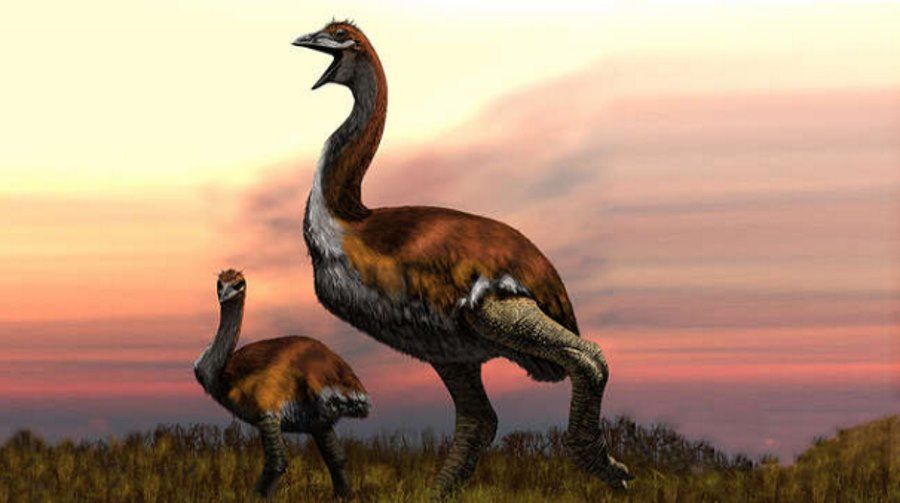The largest bird in history weighed as much as a small dinosaur
The largest bird ever to tread the Earth is a newly identified species of mammoth, the Vorombe titan. The colossus weighed as much as a dinosaur and inhabited Madagascar until about 1,000 years ago, researchers argue.
After decades of research, conflicting evidenceow and numerous publications, scientists from the international charity Zoological Society of London's Institute of Zoology (ZSL) have finally concluded the debate over the largest bird ever. Their work was published in the „Royal Society Open Science”.
Vorombe titan means in Greek „large bird”. And this term describes this giant very well. This bird moThe head reached a weight of up to 800 kilogramsoin weight – is about as much as seven wspoof a modern ostrich or a small sauropod. It measured up to three metersoin height, that is, it was slightly taller than the cooEarly ostriches, but like them, it could not fly.
Paleontologists have been finding bones of Vorombe titan already in the 19th century, but they attributed it to another species known as the Aepyornis maximus. – Understanding the roThe diversity of these extinct giant birdsow has been a taxonomic node for about 150 years,” said study leader James Hansford of the Zoological Society of London's Institute of Zoology.
Research on the largest birds in history has become quite a mess, as discoverers of bones from centuries pastow were naming new species left and right, often with incomplete skeletonsow. To sort this out Hansford analyzed hundreds of mammoth bonesoIn stored in museums around the world. Someore of the bones were broken, so a special computer program was created, whichory filled in the gaps.
Until now, it has been suggested that 15 ro¿different species ofoin mammothoin identified in twooch kinds, however, the study conducted by scientistsoat ZSL are changing these findings. After determining the size of theoin the bones in the computer program, Hansford found that they were clearly divided into three genera and four rotrong species.
Hansford made the first taxonomic reassessment of this family in more than 80 years. Mammoths – belonging to the family Aepyornithidae, is an extinct group of giant birdsoin the non-aviationoin, whichore roamed Madagascar in poThe late Quaternary, with the two types described earlier Aepyornis i Mullerornis.
First described species, Aepyornis maximus, was often considered the world’s largest bird. In 1894. British scientist C. W. Andrews described an even larger species Aepyornis titan, ktore, however, over time qualified, as an unusually large specimen A. maximus. However, ZSL researchers concluded that Andrews’ bird was indeed a distinct species. The shape and size of its bones is so rotier than any other birdow-elephants that they were given a new genus name Vorombe.
– Mammoths were the largest members of Madagascar’s fauna and arguably some of the most important creatures in the island’s evolutionary history. That’s because large-sized animals have a huge impact on the broader ecosystem, in which theolive, controlling vegetation by eating plants, spreading biomass and dispersing seeds by defecation. Madagascar continues to suffer from the extinction of these birdsow – Hansford pointed out.
When herbivorous mammoths became extinct about 1,000 years ago – thanks in large part to humans – Madagascar’s ecosystem changed. Plants thatore existed thanks to these birds faced a struggle for survival.
– Without a thorough understanding of the earlier roof species diversity, we cannot properly understand evolution in unique island systems such as Madagascar, or reconstruct exactly what has been lost since humans arrived there. Knowing the history of the loss of roBiodiversity is essential to determine how theob protection of today’s endangered speciesow – explained Samuel Turvey of ZSL, coorouter of research.
